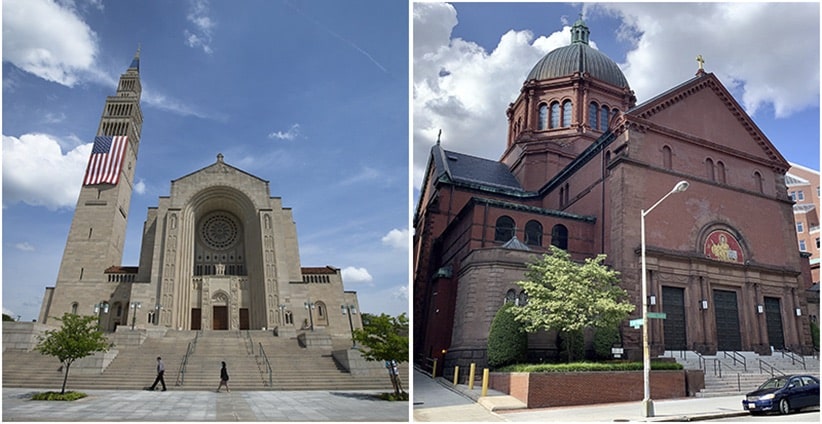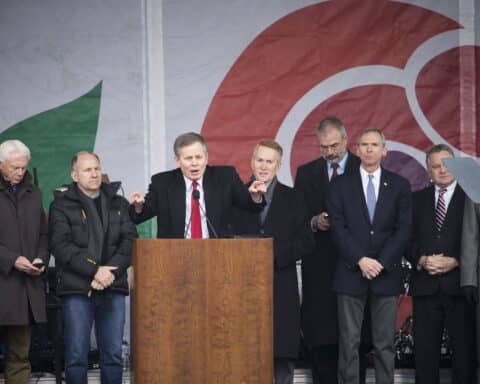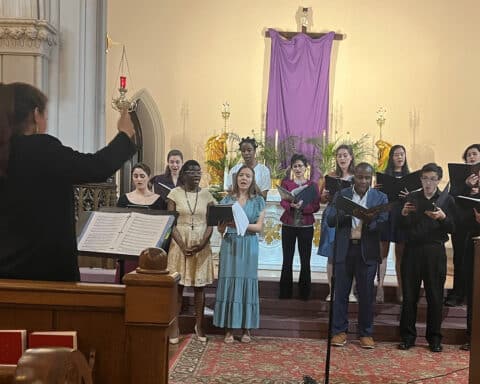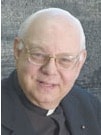
The shrine is immense, but it is not the size that gives it distinction. The architecture is magnificent, and inside the church the decorations are breathtakingly beautiful.
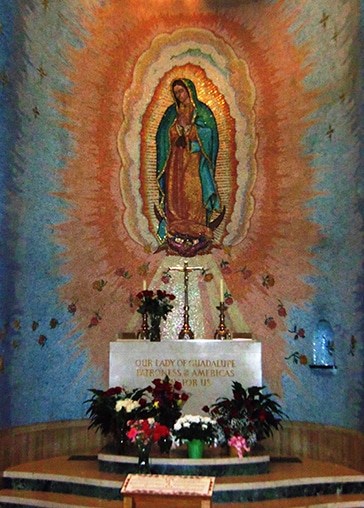
Side chapels display images of the Blessed Mother especially beloved in various cultures and places: Our Lady of Charity for the Cubans, Our Lady of Czestochowa for the Poles, Our Lady of Camarin for the people of Guam, Our Lady of Šiluva for the Lithuanians, Our Lady of La Vang for the Vietnamese, Our Lady of Guadalupe for Mexicans, Our Lady of Vailankanni for the Christians of India, the Holy Mother of Africa, the Queen of Ireland for the Irish, and others.
These chapels teach important lessons. First, the People of God, and the population of the United States, include persons of every nationality and background. Americans, unless of Native American heritage, or their forebears came from somewhere else. Modern immigration is nothing new.
Second, in all places and in all times since the apostles, Christians have loved the mother of God, seeing in Mary a spiritual mother.
Three and a half centuries ago, a French missionary, Father Jacques Marquette, for whom Marquette University is named, came upon what now is known as the Mississippi River. Spellbound by seeing a river more imposing than any in Europe, he called it the “River of the Immaculate Conception.” It was the greatest of all rivers, or at least among the rivers that he knew. Mary was the greatest of all human beings, of all Christians.
During the Second World War in Poland, the Germans arrested a Catholic Polish woman, Marianna Biernacka, now beatified, for hiding Jews. Immediate death was the penalty. She requested not mercy but that the Germans would allow her to die with her rosary in her hand. In an amazingly unusual stroke of compassion, they agreed.
St. Matthew’s Cathedral, principal church of the Archdiocese of Washington, is one of most magnificent Catholic churches in the country. It is difficult to isolate any particular feature since the church overall is so grand, but several places deserve special attention, with lessons to impart.
In the Blessed Mother’s chapel is an unusual depiction of Mary. Most Marian images show the Mother of God standing with the infant Jesus in her arms. Some present her while seated on a throne.
The image in St. Matthew’s has her leaning forward, one hand outstretched, as if reaching to the beholder to pull him or her upward. Her other hand is lifted, pointing to a golden cross above the statue.
It is the cross of the Resurrection. The body of Jesus is not on the cross. He is risen. He lives! The cross is golden. Because of the Lord’s sacrificial death on the cross, we are redeemed. Eternal life is available to us. We can hope.
In this vale of tears, tempted by the world, the flesh and the devil, it is not always easy to reach the gleaming, golden cross, but Mary eagerly extends her hand to us.
Christ fortifies us. In the Blessed Sacrament Chapel in the cathedral, a wall of mosaic, behind the tabernacle, shows the two disciples who walked with Jesus to Emmaus, as recorded in St. Luke’s Gospel. An inscription quotes the Gospel. They recognized Jesus “in the breaking of the bread,” an ancient Christian term for the Eucharist.
In the center aisle is the spot where President John F. Kennedy’s body lay at his Requiem Mass in 1963. His widow asked that two hymns, central to Catholicism, be sung, Panis Angelicus, the great song so majestically praising the Eucharist, and Ave Maria.
Msgr. Owen F. Campion is OSV’s chaplain.

